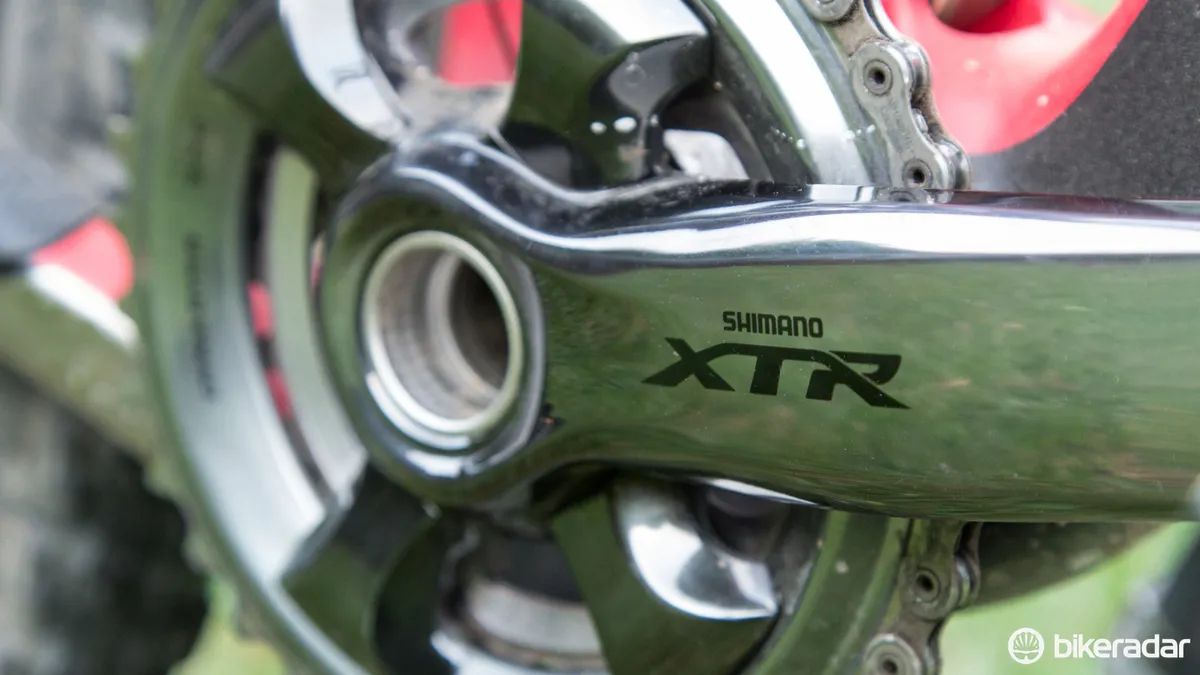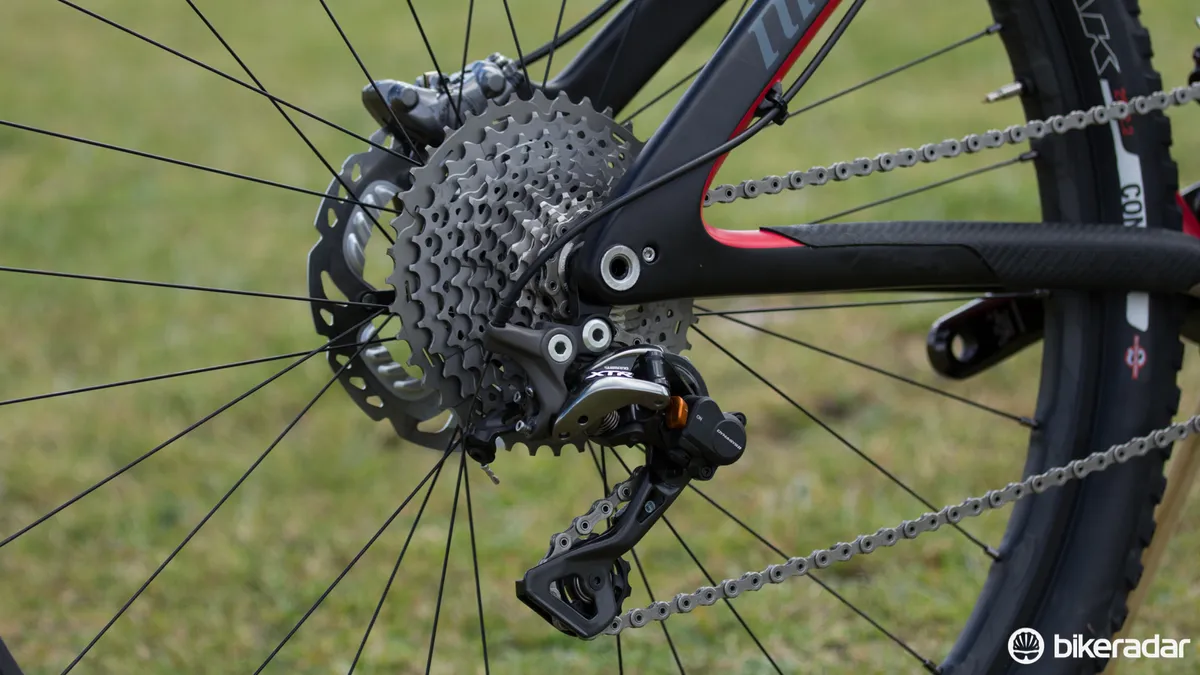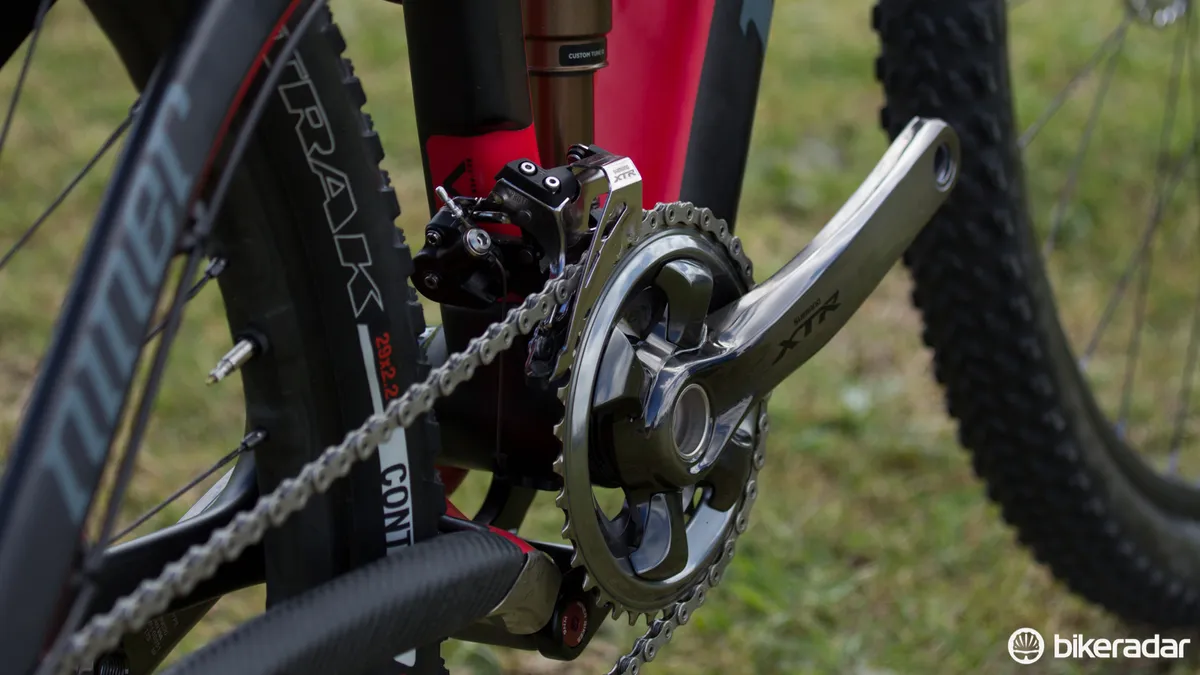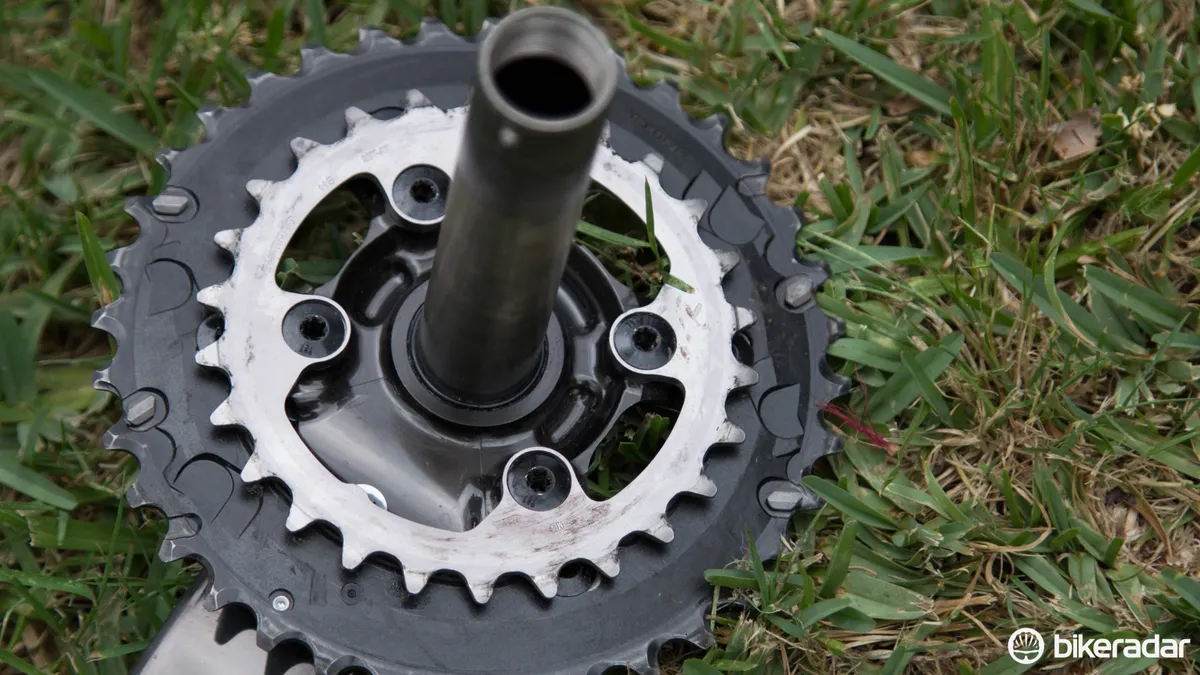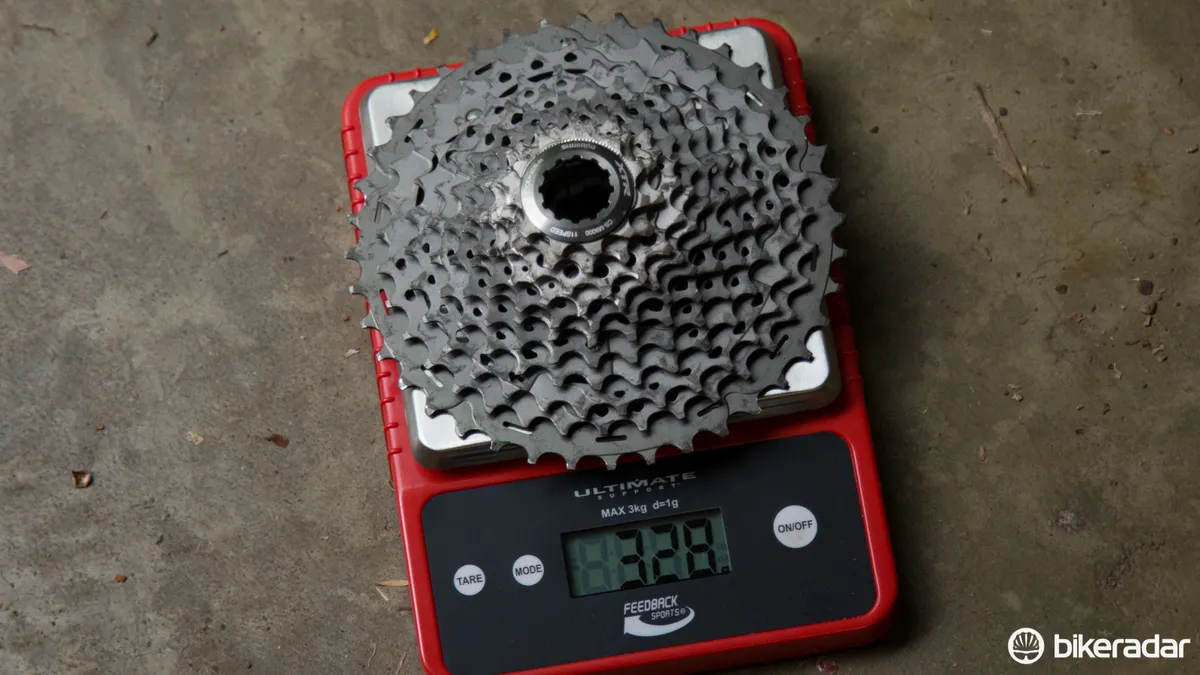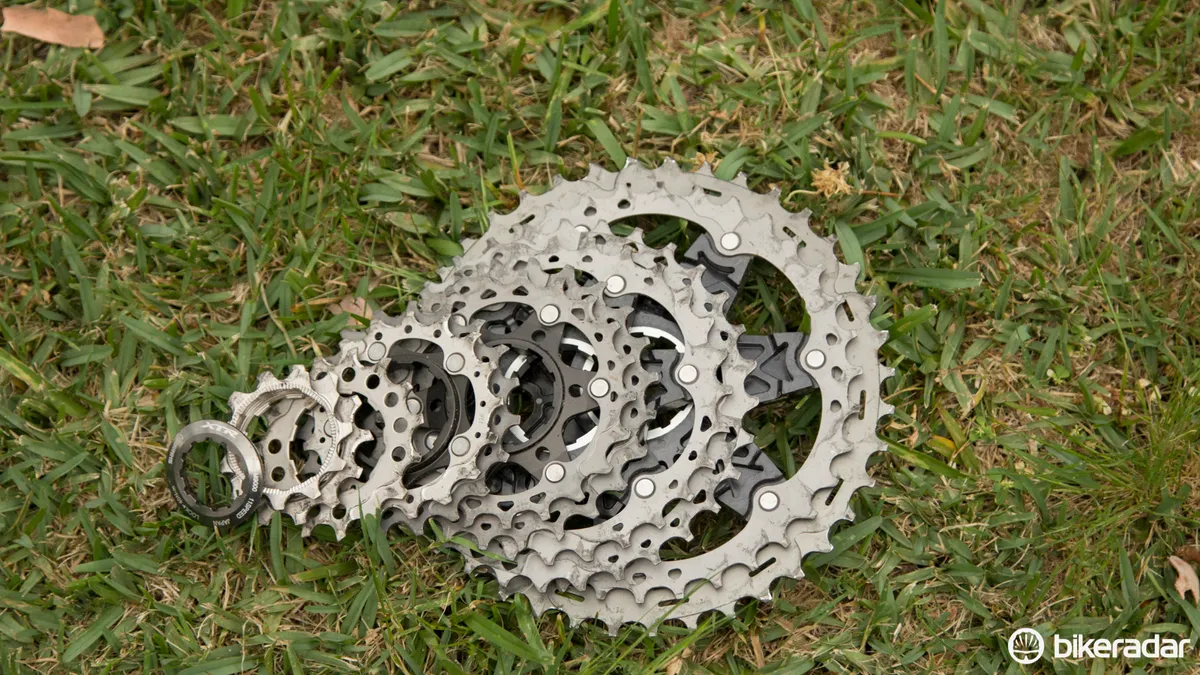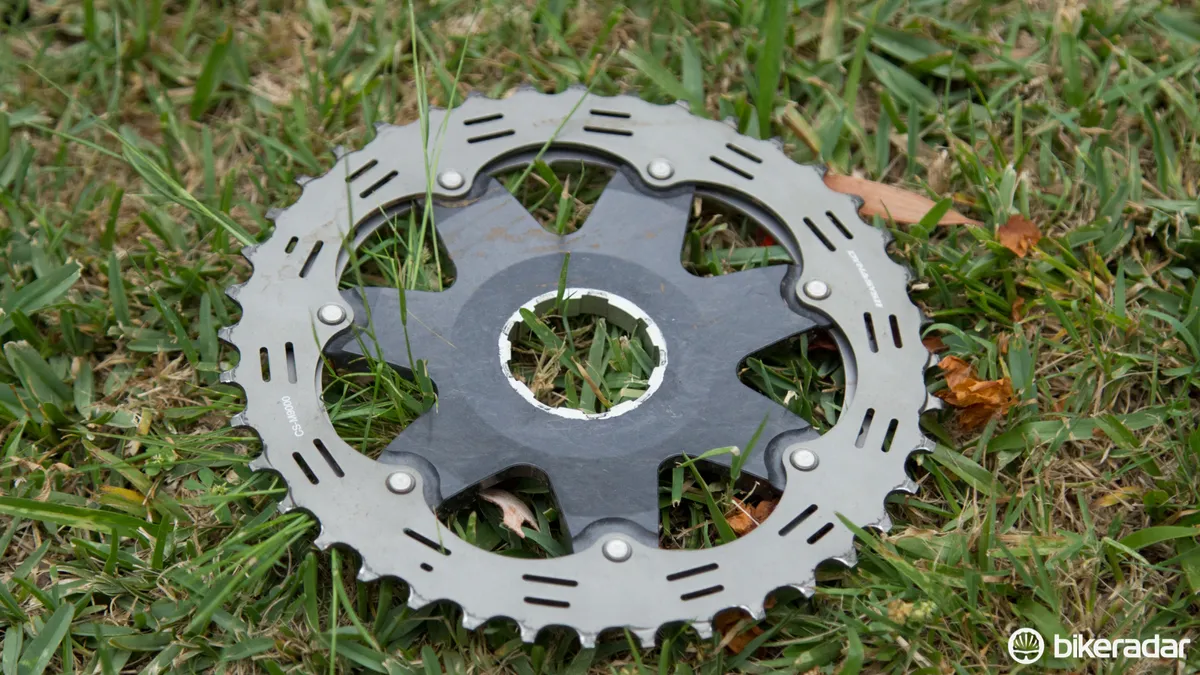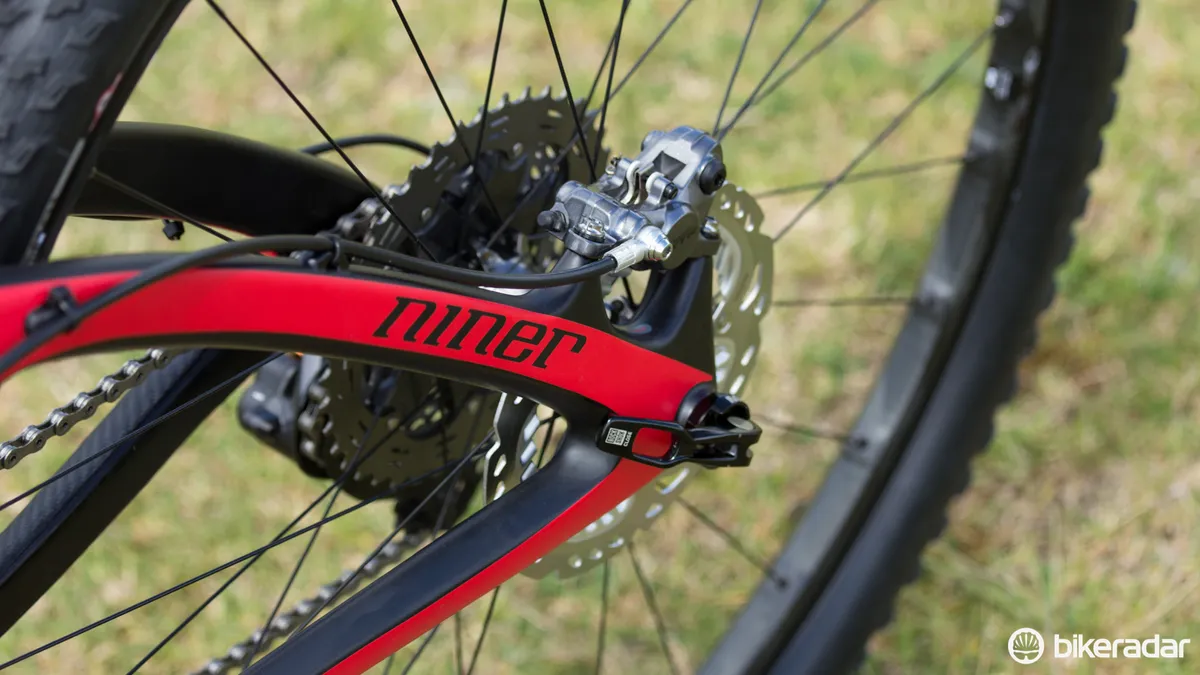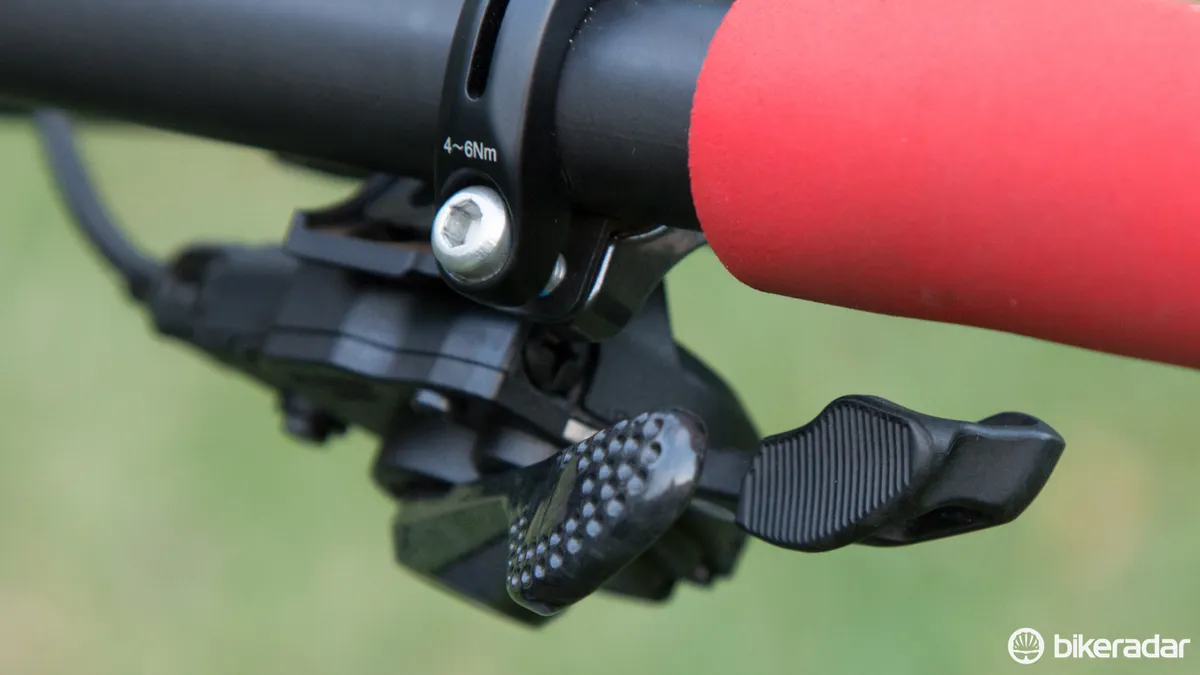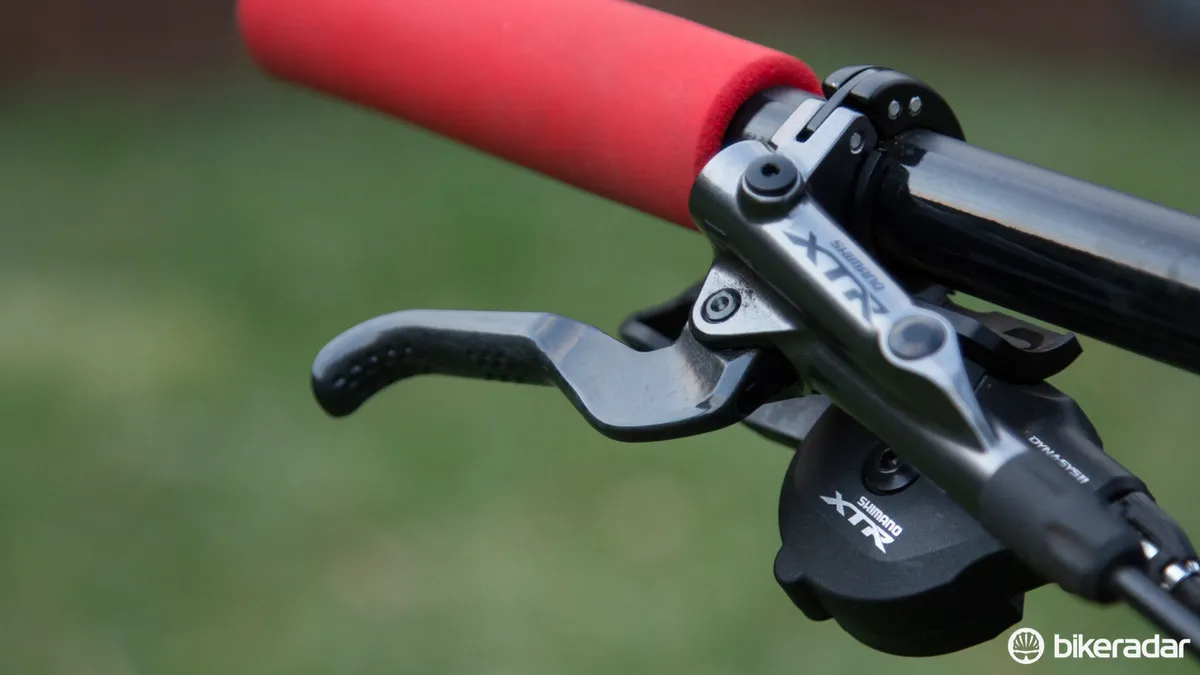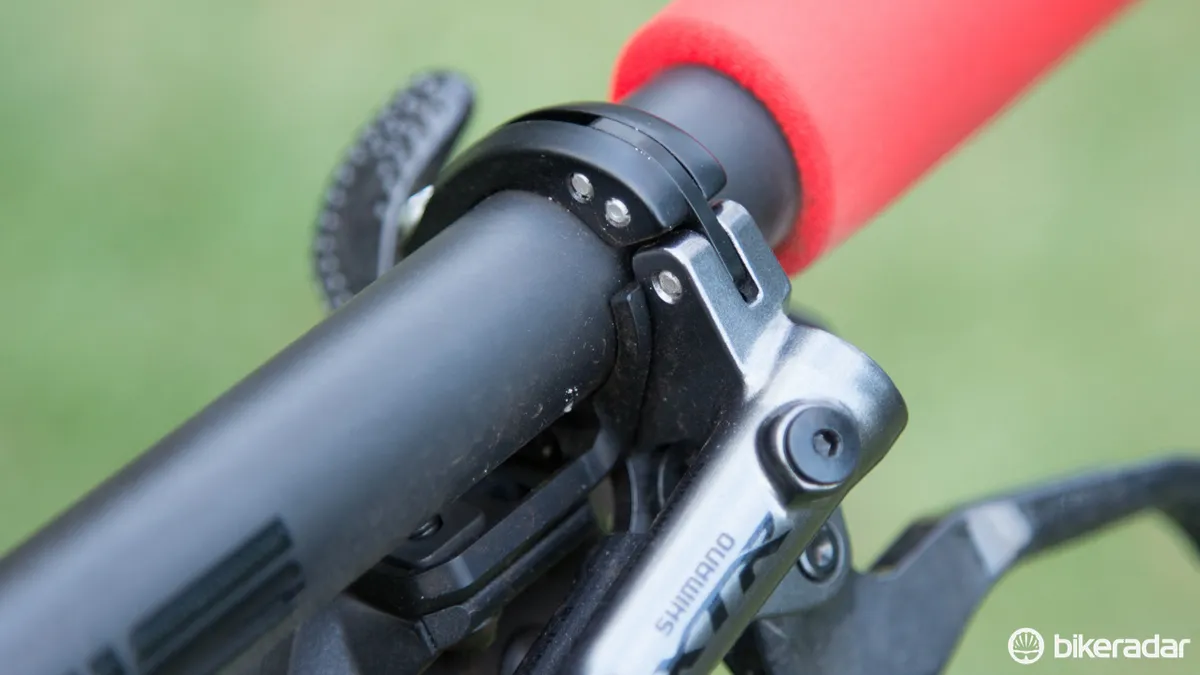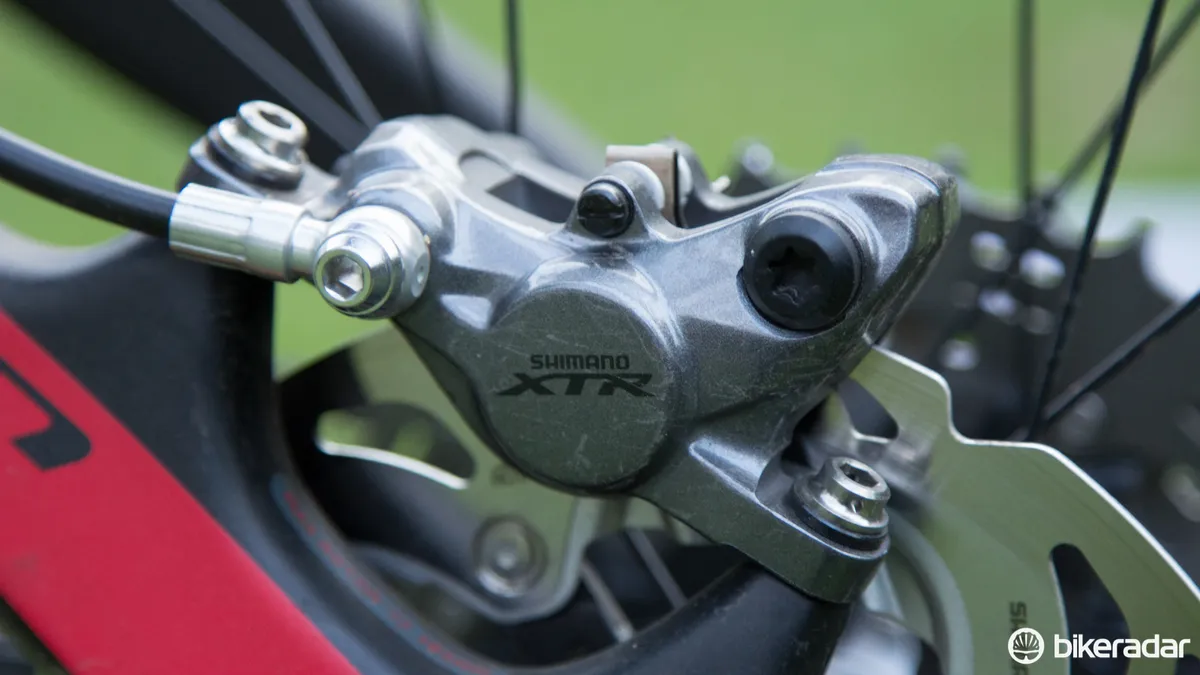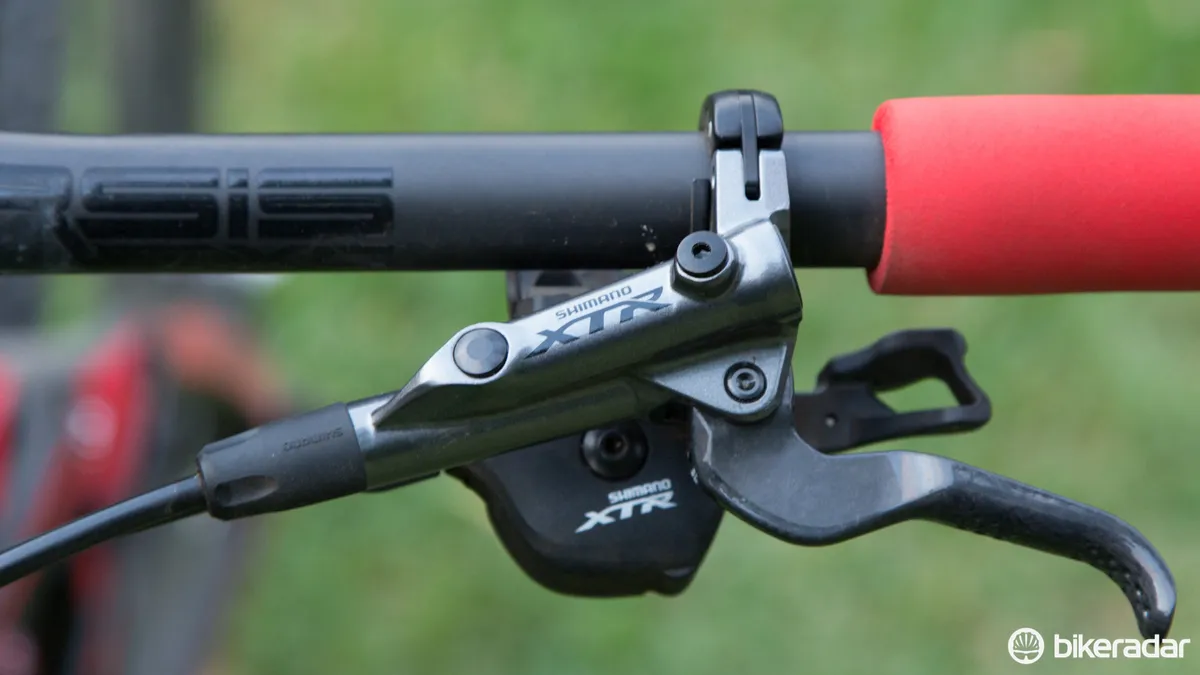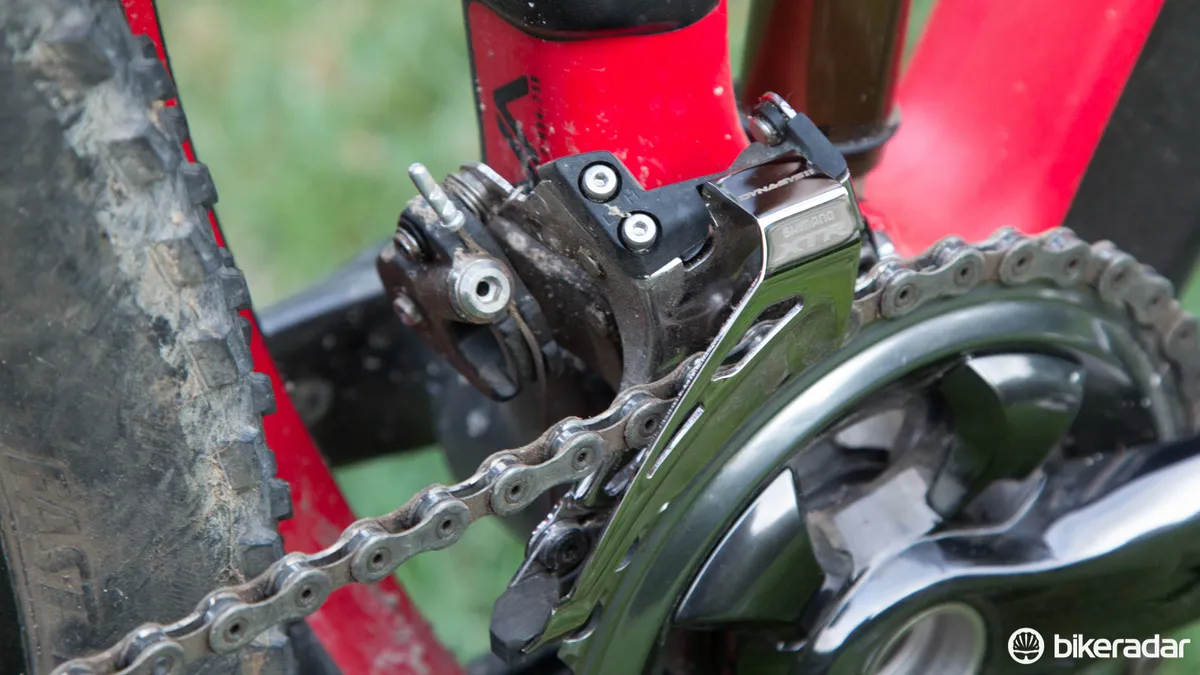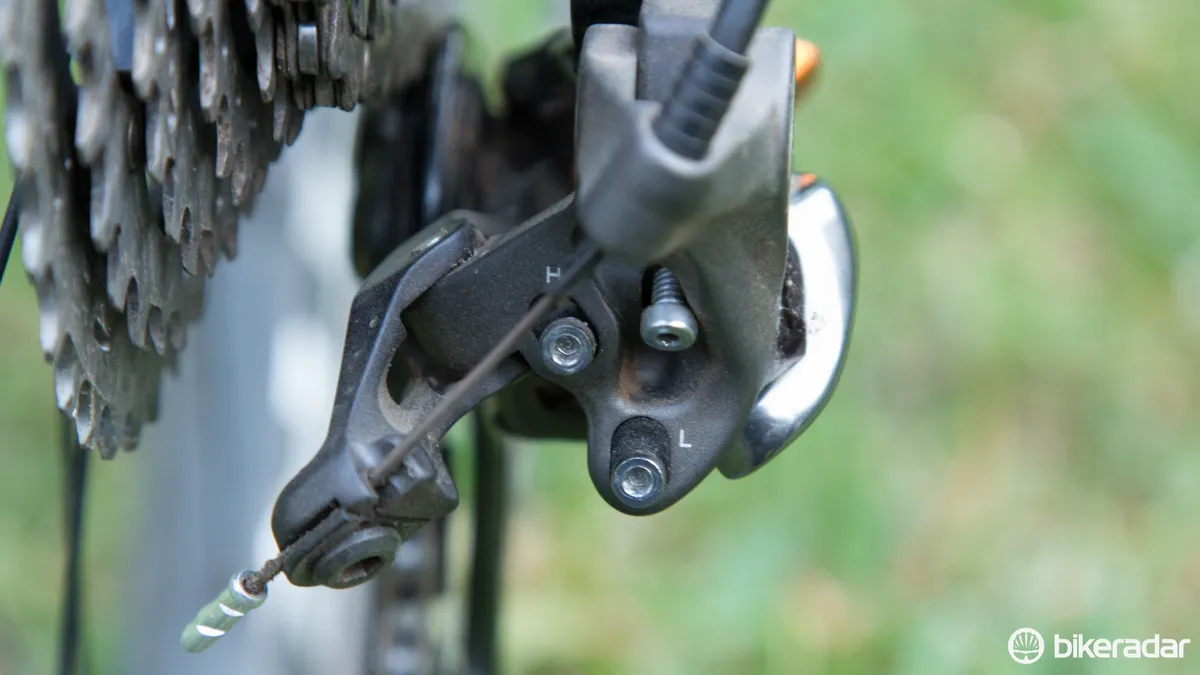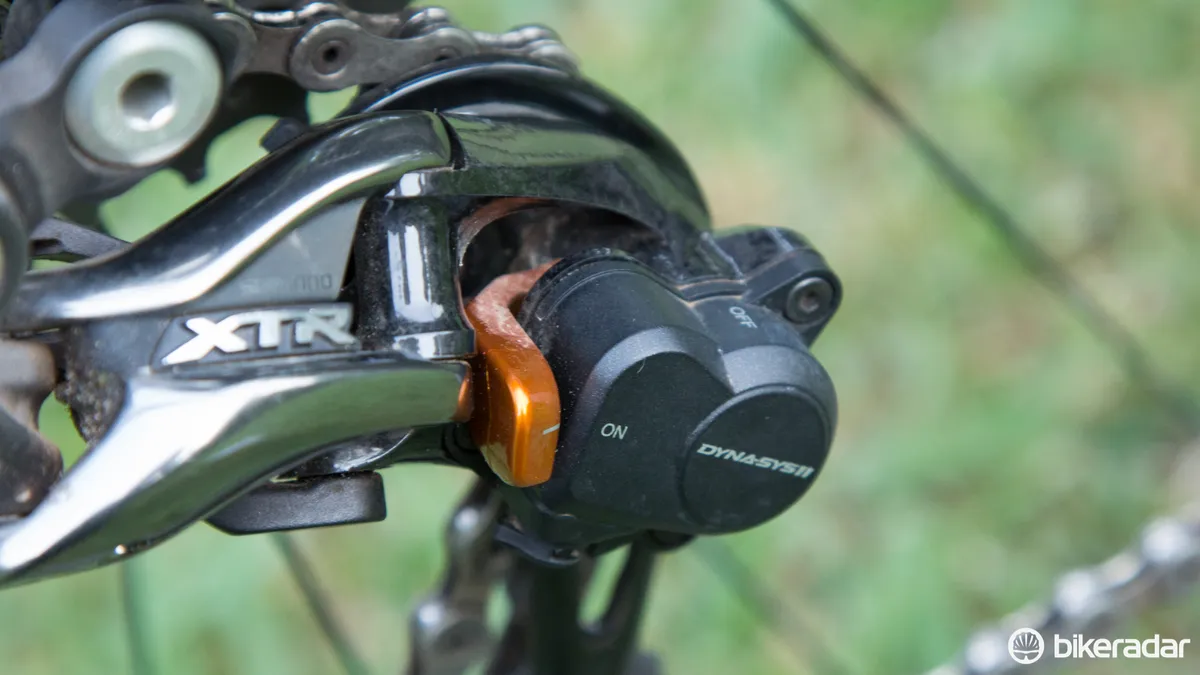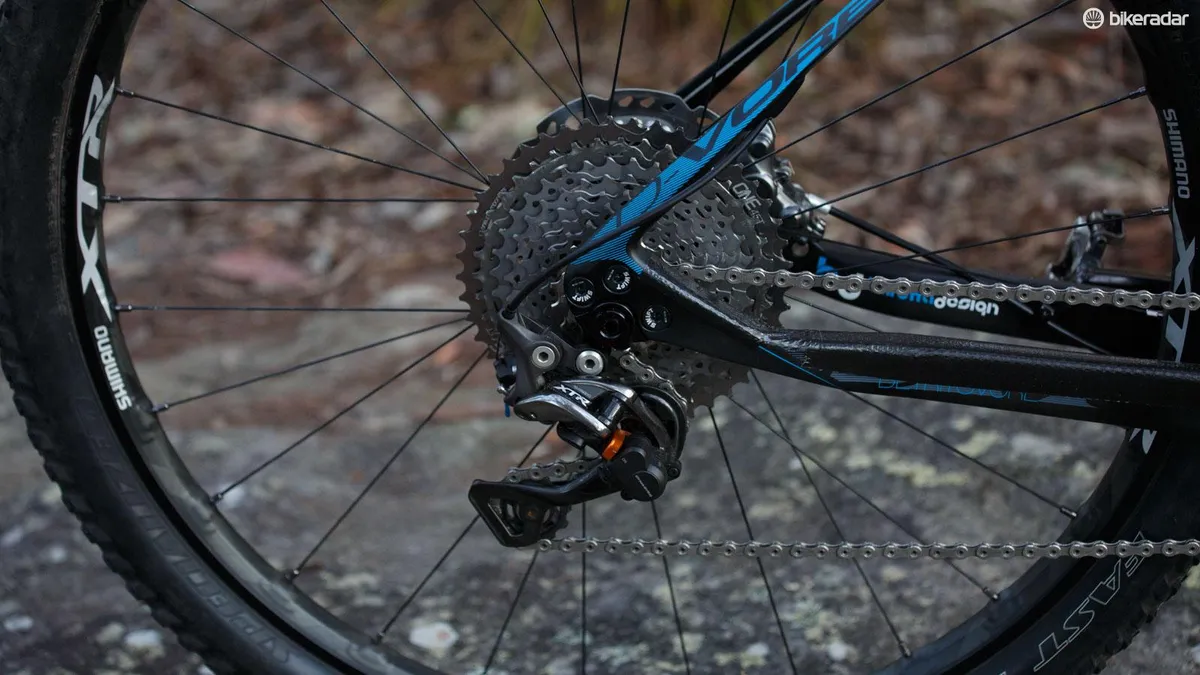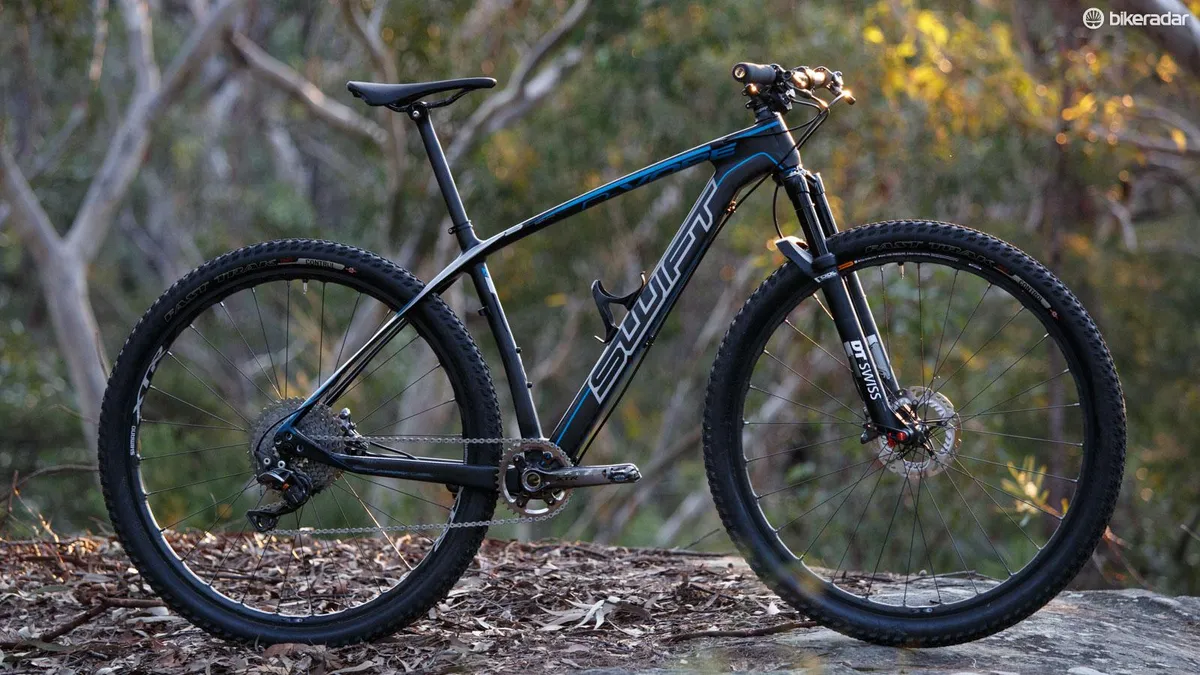Shimano XTR 11-speed has now been on the market for a solid year and we’ve been racking up the miles since. With the biggest news surrounding the introduction of an electronic option, the mechanical version of Shimano’s top-tier groupset was, for once, rather overlooked.
For the new XTR, Shimano made the move to an 11-speed drivetrain, offered a choice of single, double or triple chainrings and continued with its ‘Race’ or ‘Trail’ versions, keeping options plentiful. Shimano is no stranger to trickle-down technology and we’ve since seen much of this new XTR technology trickle onto Shimano XT 11-speed for 2016.
We’ve covered the technical details already, in our first-look article, so we won’t rehash that, but having raced the groupset on first-sight at the Cape to Cape mountain bike race in Western Australia and having ridden it plenty since, across two bikes, we’re now updating our original ‘first ride’ review with longer-term findings.
Related: Horse for the Course – Cape to Cape MTB race
Shifting: smooth, calculated and precise with every click
As XTR is the pinnacle from Shimano, we would expect nothing short of exceptional shift quality. We can confidently say that this is very much the case with the 11-speed XTR – each shift is met with a perfectly positive click at the lever, followed by a near-instant change of gear.
One of the biggest changes made to the shift action was a reduction in shift resistance at the lever caused by the Shadow Plus clutch rear derailleur. Previous systems would see shift friction rise progressively as the chain was shifted upwards toward the spokes. This is now all but removed, with a smooth, linear feel through the shifter with each shift, all the way up to the 40t big cog.
The shift levers are textured. The large carbon thumb lever has a dimpled surface, and the smaller lever has a fine ripple to it. This texture prevents your fingers slipping off the lever in severe conditions and somehow makes the shift effort seem easier.
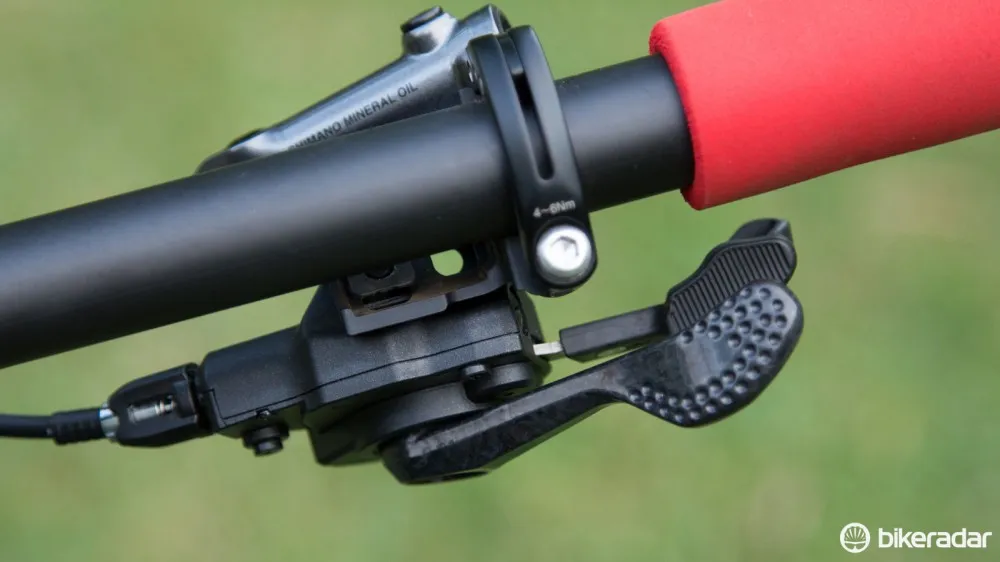
That's a clean bar setup
The shifters mount to the bar via the I-Spec II clamp system to provide a clean look. If you're looking to run brakes from another brand, you will need to purchase the shifters setup with the appropriate bar clamps.
The approach to rear shifting remains the same, with multiple upshifts available and potential for two downshifts when using your thumb on the smaller lever. Pulling the same smaller lever toward you, like original rapid-fire shifters will only allow a single shift at a time.
Some of this smoothness and lighter action is due to a new lined cable system, which is the same as those used in the Ultegra and Dura-Ace road groups. The lining of this cable has proven more durable than previous coated version, although our preference still sits with cheaper stainless cables and replacing them more often.
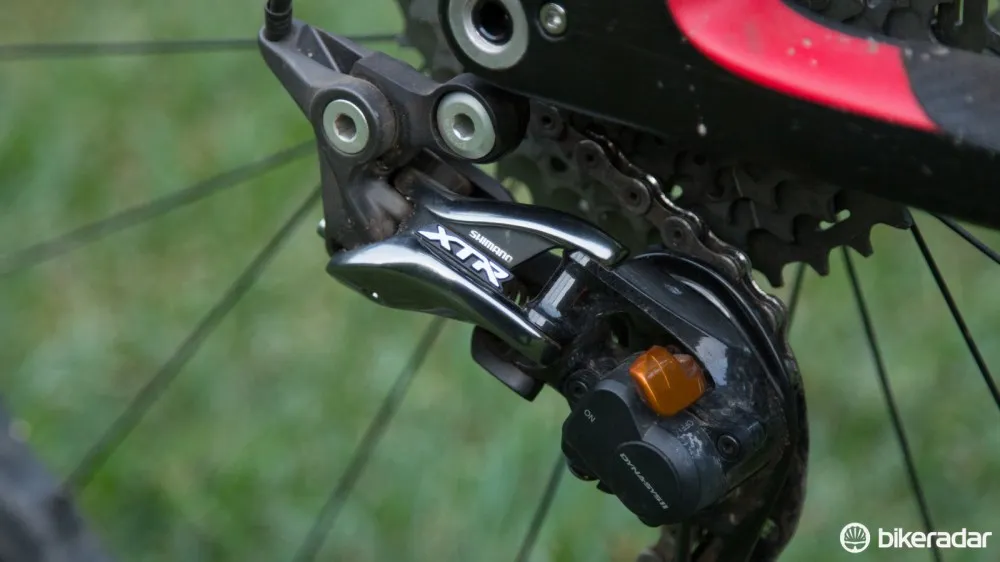
Clutch adjustment is now external
Looking to the rear derailleur, the chain retention aiding clutch system continues to allow you dial in the resistance to prevent chain dropping and frame slap. The clutch tension can now be adjustned externally with a hex wrench, a good addition given the clutch does wear with use and so will need occasional adjustment (we needed to do ours at the eight month mark).
The front derailleur is kept just as quiet with plastic guard on the inside edge of the cage to help silence the noise commonly heard from the chain. Our original Niner Jet 9 RDO test frame needed a standard E-type front derailleur and so that’s the model we’ve tested. And while we are yet to test one, the big news is in the all-new side-mount derailleur standard, something a small handful of frames are starting to cater to.

XTR offers the best front shifting on a mountain bike we've ever experienced
The front shifting quality often sees a marked improvement as price increases, and the new XTR is no different. The stiff chainrings and increased front derailleur power positively controls the chain between rings and even shifting under powerful efforts (normally a bad idea) sees the chain move to the chosen ring without hesitation.
Drivetrain and gearing: options at the front, single choice out back
Despite the choice of one, two or three chainrings up front, the cassette is only available in a 11-40t size. Although Shimano advises against it, the far cheaper Shimano XT M8000 cassette is now available in both 11-40 and 11-42t configurations, and we can attest the latter works with XTR in a single-chainring configuration.
Our ride was originally fitted with the M9020 Trail crankset, the model that allows complete interchangeability between all chainring options (the M9000 Race option cannot handle a triple). We were supplied with a double 26/36t combination, which proved a great combination for our racey 29er and pinchy trail conditions.
So far, the biggest talking point is how the gear ratios compare with SRAM’s hugely popular 1x11 drivetrains.
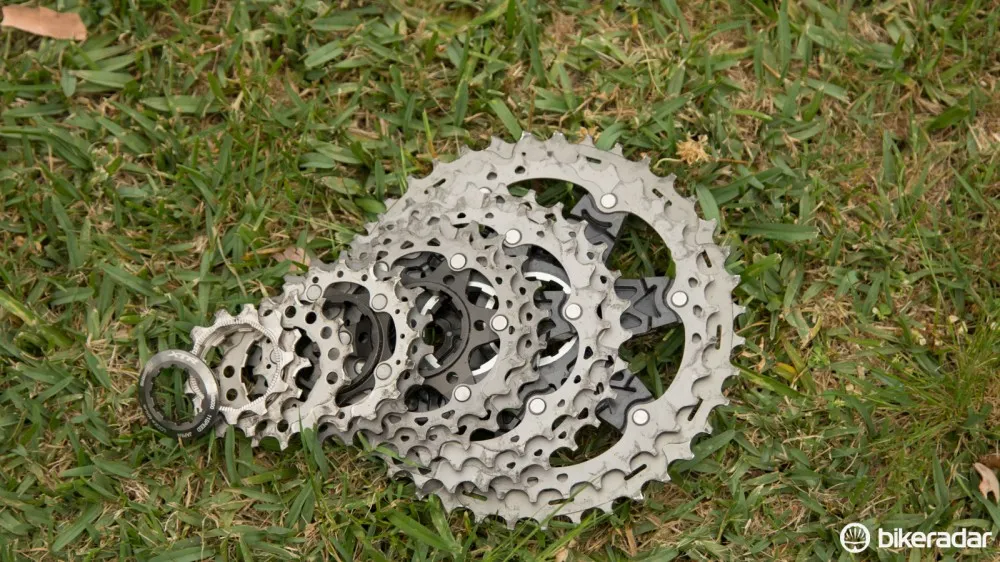
Fewer gaps is how Shimano justifies its 11-40T cassette
Many say that Shimano’s 1x11 option isn’t a fully committed option. However, Shimano argues that its tighter 11-40t cassette leaves fewer gaps between cogs and allows for a more efficient pedal stroke with less cadence change between shifts. While this is something we have noticed, we still feel a larger gear range will best serve most dedicated 1x11 users, with SRAM’s 10-42t option being the obvious point of comparison.
Stronger riders or those riding flatter areas will likely be able to make-do with the 11-40t range, and the likes of Julien Absalon and Dan McConnell aren’t showing signs of missing the extra range.
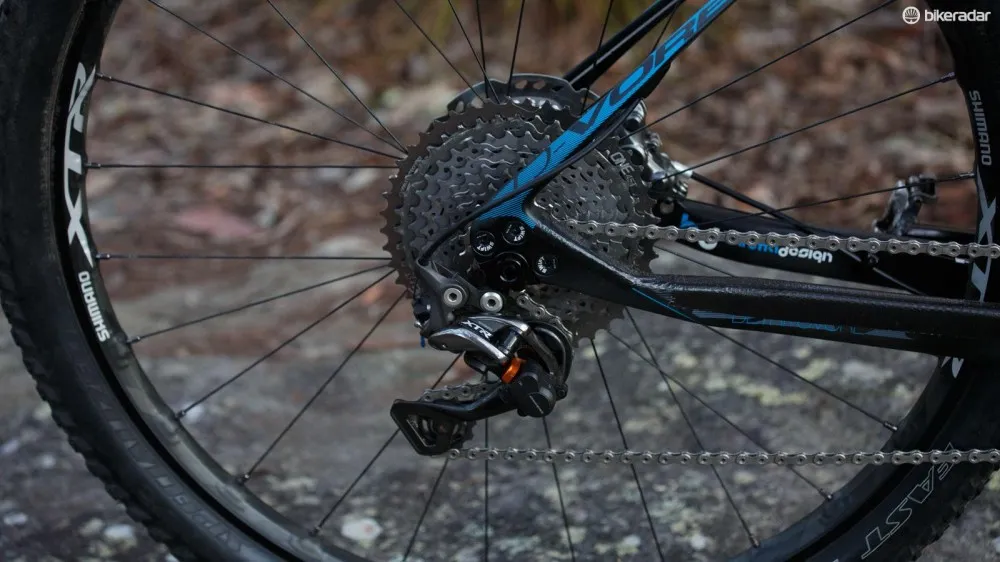
There are now options to expand the gear range for 1x11 users
That said, there are now options outside of Shimano’s XTR offerings to increase the gear range. The first is using the new XT 11-42t cassette, something that will add 119g over the XTR model, but costs a whole lot less. A secondary option is to get an aftermarket expander cog from the likes of OneUp Components, which will boost the cassette to an enormous 11-45t – just beware that shifting won’t be quite as good. This latter option is something we’ve been testing for a while now on a Swift Detritovore hardtail test build, so far with good results.
Related reading: Building an XC race rocket
However, it’s when linked with front shifting that the 11-40t cassette option starts to be very appealing, allowing you to remain in your big ring for far longer and with a significant bail-out gear when crucially needed.
With this, where SRAM has just about let its off-road front derailleur systems die off, Shimano is clearly still supporting the cause and for many riders, especially those who ride in the 'proper' mountains, it will still prove a popular option.

Despite featuring titanium and carbon in places, the XTR cassette isn't super light
The cassette is made up of multiple materials including aluminium for the spline, carbon for the carriers and a combination of steel and titanium cogs in an effort to reduce weight, creating a 328g total. Compared with a 260g SRAM XX1 cassette, the weight still seems oddly high.
Our first-ride review complained of a creaking cassette. Covering the M9000 wheel’s titanium freehub with thick grease and torqueing the lockring tightly helped a fair bit, but wasn’t a true fix. Strangely, the noise ended up disappearing on its own. Whether this was due to rivets wearing, or perhaps mud and lube filling the gaps it’s hard to say, but the noise hasn’t returned since.
The new M9000 11-speed chain is the same model as used on the Dura-Ace road group. Featuring a special coating known as ‘Sil-Tec’, it shifts smoothly and does exactly as expected.
Durability of the cassette is about where we'd expect, given the distances ridden, and the chain is showing resistance to stretch beyond what we’re accustomed to with older 10-speed chains. That said, the titanium cogs used in this cassette are notoriously faster-wearing than cheaper steel cogs, and so replacing chains more frequently will ensure you won’t be buying an expensive cassette prematurely. The cheaper XT cassette is certainly more durable in this regard.
Braking: major changes lead to subtle improvements

High in performance, but we've had issues with our samples
Plenty has changed in the brake department. Our M9000 race brake samples for the most part (more below) are consistent stoppers, providing easily controlled modulation. This modulation is a key factor when racing. It gives you the confidence to leave your braking to the last second without uncontrollably locking the wheel.
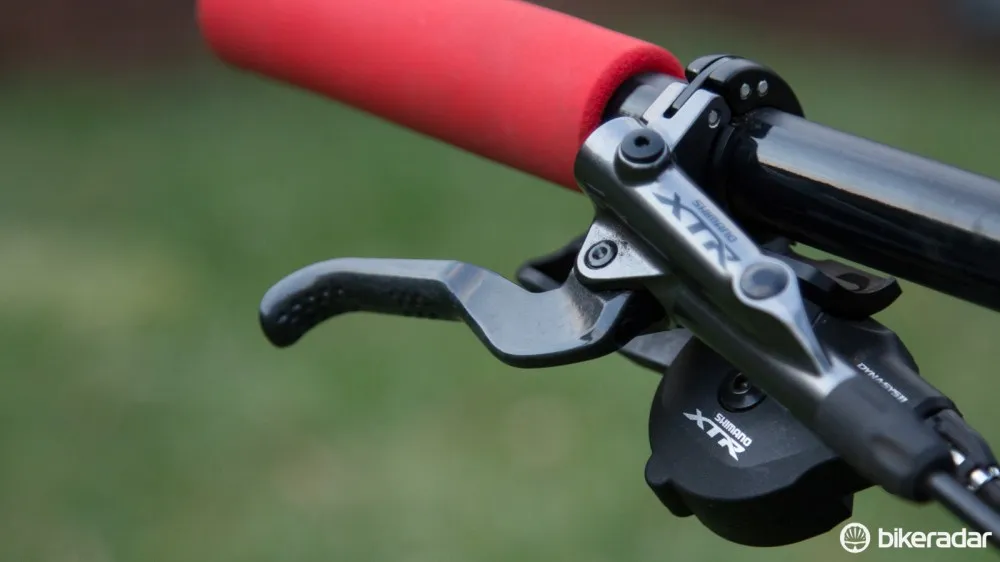
The M9000 levers are pared back for weight savings. That said, we prefer what the M9020 Trail versions offer
These Race levers do without the external lever reach adjustment, Servo-Wave and the free-stroke adjustment found on the Trail version in the name of weight saving, so they lose some all-out power too. Traditionally, the Race brakes have a softer lever feel and less grabby ride when rolling than the Trail version, and this has proven to be true again in the M9000s.
The carbon lever blade features the same dimpled surface as the larger thumb shift lever, which aids grip and, consequently, increases confidence in one-finger braking.
On the same descents where we’ve experienced brake fade with older generation XTR Race brakes, the M9000’s showed no such issue. The 160mm Freeza rotors are no doubt a part of this success, with plenty of technology focused on drawing the heat away from the brake track.
Like so many other disc brakes, get the XTRs wet and you’ll hear about it. Riding on rain-soaked trails resulted in squealing, something that quickly disappears as the rotors self-clear.
Unfortunately, leaving the bike sitting for a few weeks revealed an issue of self-contamination we’ve experienced with other Shimano brakes that use ceramic-type pistons (the new XTR uses glass-reinforced pistons).
Without being able to prove it, our suspicion is that the pistons seep just enough oil that if left untouched for a length of time will affect braking performance. We say without proof, as removing the pads and replacing them with a bleed block and locking the lever in place over night reveals no sign of leakage.
Under regular use, this oil is insignificant, unnoticeable and burns off immediately. However, don’t touch the bike for two to three weeks and you return to a noisy and bite-less brake. It’ll still stop you, but it lacks aggression. Ride the brake like this for an hour, and it’ll be back to normal, with the brake’s heat being enough to fix the issue.
Although our time on them is more limited, the M9020 Trail brakes should without doubt be the more popular choice. The minimal weight penalty is easily offset by the additional control afforded by Shimano’s Servo-Wave technology, and the brakes offer a firmer feel at the lever, which translates to more bite at the caliper (same as M9000).

The finned pads in the Trail brakes aren't that light. The simpler pads in the Race brakes account for some of the weight savings
Given that the biggest weight weenies are likely looking at brakes even lighter than what Shimano offers, the XTR Trail brakes would be our pick over the Race’s. And if you are focused on weight, just swap out the Trail’s finned pads for the alloy-backed resin pads the Race brakes come with.
Related reading: Shimano XTR M9000 29er wheelset review
Conclusion
The available choice of components in the groupset is a positive and perhaps only let down by the tighter rear cassette range. The shifting performance is a true market benchmark and does the XTR badge proud. However, the price is a tough pill to swallow and along with our brake issue means the score isn’t quite as high as it otherwise might be.
That all said, we’re most excited with how this technology has already trickled down into XT. Our time spent on the new XT shows shifting and braking is exceptionally close to XTR’s, with the only negative being seen on the scales.
If it were our money and we were looking for the very best mechanical groupset with front shifting – XTR is it. Remove that front derailleur, and the lighter weight and wider gear range would have us picking SRAM’s XX1 transmission and either XTR Trail or SRAM Guide Ultimate brakes.
We’ll continue to put the distance on this XTR 11-speed groupset and report any further findings as and as they arise.
Groupset price is based on a double crankset (without bottom bracket) and includes brakes/rotors.
